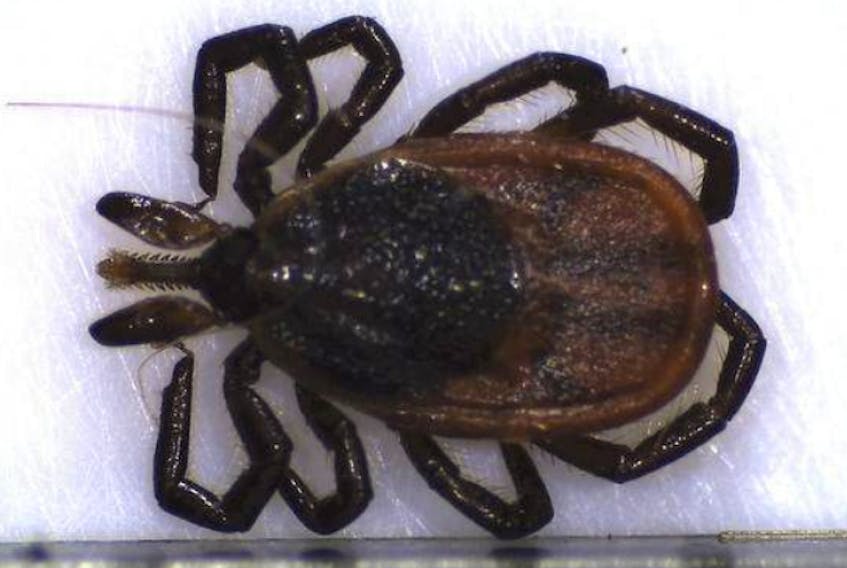NOVA SCOTIA - With the number of Lyme disease cases in Nova Scotia continuing to increase, health officials are warning people to be extra vigilant to protect themselves from ticks while outdoors.
Dr. Robert Strang, the province’s chief medical officer of health, said there were more than 400 confirmed cased of Lyme disease in the province last year, up from 326 in 2016.
“We’re certainly seeing increasing numbers of reported cases, which is because of the increasing population and the spread of black-legged ticks,” he said.
The black-legged tick is the only species in the province that carries Lyme disease.
Strang said more people are being exposed to ticks as their range expands, and that is part of the reason for the increase in cases.
He said while the risk of being bitten by a tick in late fall and even later winter is still possible depending on conditions, “the real risk is as we head into the warm months of spring, summer and fall. It’s often toward the end of summer when we see a spike in Lyme disease reporting.”
The spike comes when people are most active outside and the ticks are maturing, Strang said.
“We also think that because of the public awareness and the work we’ve done with primary care providers, there’s greater recognition and therefore (more) testing and reported cases as well,” he said.
He said that as the weather warms up, “we really want to make sure that Nova Scotians are aware of some of the basic steps they can take to protect themselves against tick bites and tick-borne diseases.”
The risk of being bitten by a black-legged tick is something people need to be aware of throughout Nova Scotia, particularly on the mainland, Strang said. His office will be releasing its annual risk map in a few weeks that shows where they are most prevalent.
“Even though the risk may vary from one part of the province to another, being active and outdoors in long grass, the woods and brush anywhere in Nova Scotia means there is some risk of tick bites, so we encourage people no matter where they are . . . to take the basic preventive steps.”
Those include wearing light-coloured clothing, closed shoes, ensuring your skin is covered and wearing insect repellent with DEET or Icaridin on your clothes and skin.
Even with those precautions, Strang says, everyone should perform a thorough tick check within a couple of hours of getting out of the woods. Ticks prefer warm places on the body and are most often found around the ears, behind knees, in the hair, between the legs and in the groin area, and around the waist and buttocks.
Clothing should be removed and placed in a washing machine or in a bathtub because ticks will have difficulty climbing the side of the tub.
A tick bite is almost painless, and because they are small they are hard to spot. Removing them as soon as possible can prevent or reduce the risk of infection.
Strang also recommends that people talk to their vets about having a tick treatment done on their pets, which can also contract Lyme disease. He said owners should also thoroughly check their pets after they have been in the woods.
More information can be found at https://novascotia.ca/ticksafety/









